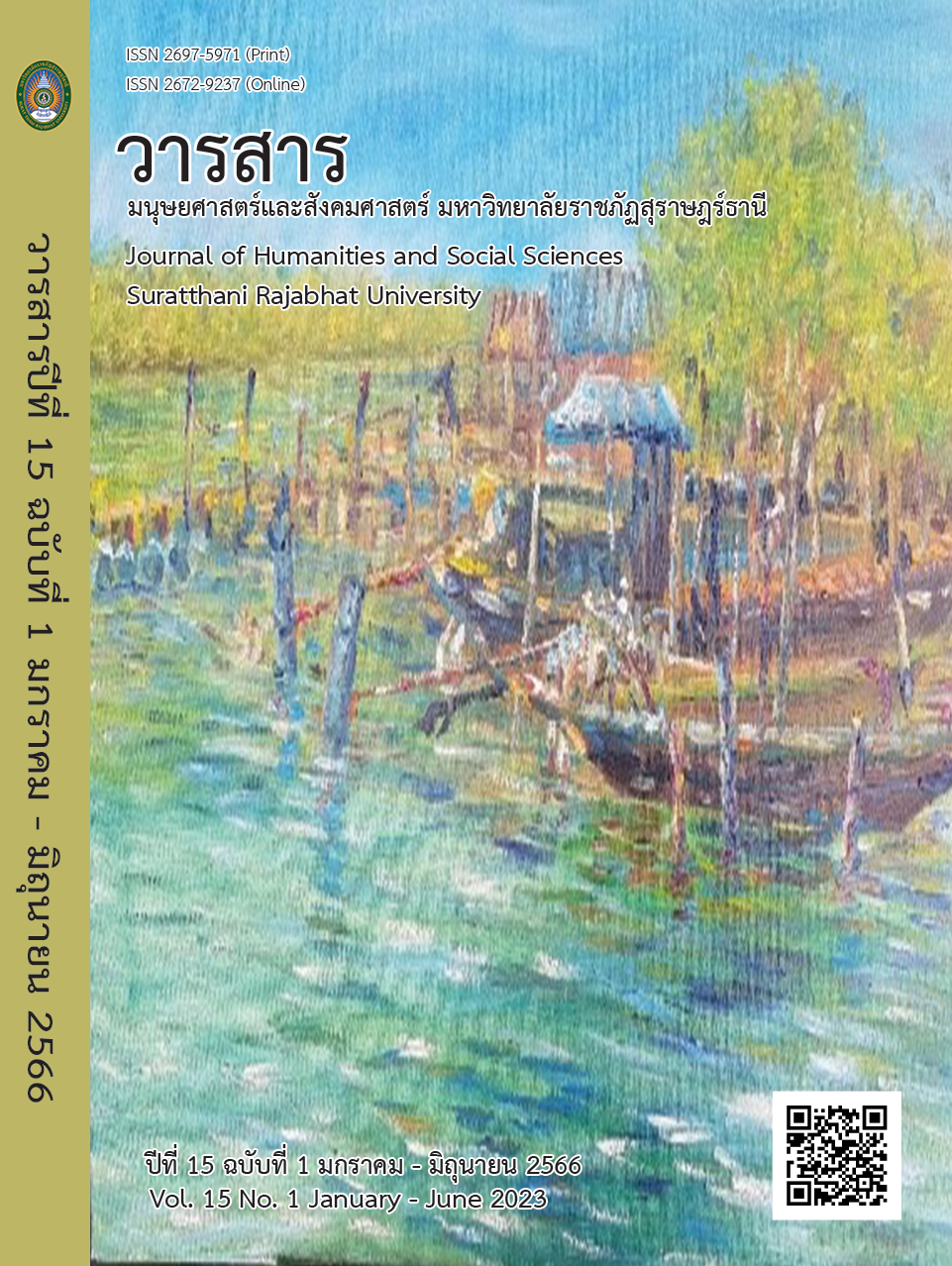The Development of Contemporary Local Cuisine Recipe of Ban Tai Community to Promote Tourism of Koh Samui, Surat Thani Province
Main Article Content
Abstract
The objectives of this research were 1) to examine participatory identities of food security in the Ban Tai community, 2) to develop a contemporary local cuisine recipe made with ingredients from the Ban Tai community, and 3) to study the satisfaction of contemporary recipes from raw materials in the Ban Tai community using a mixed research method. Collect data from surveys,
interviews, and focus groups. Key Informants who have knowledge and roles in tourism development and the Ban Tai community selected the target groups to collect specific data, totaling 20 people using content analysis. The quantitative data were questionnaires to collect data with a random sampling method
surveying 400 tourists and locals in Koh Samui. For data analysis, descriptive statistics including parsing percentage, mean and standard deviation were used. The results of the study were as follows: 1) There are three participatory identities of food security in the Ban Tai community: (1) food availability; (2) food access; and (3) food utilization; 2) The contemporary local cuisine recipe made with ingredients from the Ban Tai community can be divided into six groups,
including (1) snacks, (2) main dishes, (3) desserts, (4) beverages, (5) various dishes, and (6) the 20 best dishes to eat in the Ban Tai community; and 3) the satisfaction level of contemporary recipes made from raw materials in the Ban Tai community. It was found that the most satisfied aspect had an average of 4.95 and a standard deviation of 0.21 can be used to promote tourism and increase the economic and social value of the community in the future.
Article Details

This work is licensed under a Creative Commons Attribution-NonCommercial-NoDerivatives 4.0 International License.
All published manuscripts have been verified by peer-peer professors in the fields of humanities and social sciences. Reprinting of the article must be authorized by the editorial staff.
References
ญาณภา บุญประกอบ, จักรวาล วงศ์มณี, ศิริพร เขตเจน, และ โยธิน แสวงดี. (2560).
อาหารพื้นถิ่นกับกลไกในการส่งเสริมการท่องเที่ยวเชิงสร้างสรรค์: กรณีศึกษา
กลุ่มชาติพันธุ์ลาวครั่ง จังหวัดชัยนาท. วารสารวิทยาลัยดุสิตธานี, 1 (ฉบับพิเศษ),
ณภัทร นาคสวัสดิ์, และ มัณฑน์นันท์ ขุนฤทธิ์. (2565). ตำรับอาหารบ้านใต้เกาะสมุย.
สุราษฎร์ธานี: มหาวิทยาลัยราชภัฏสุราษฎร์ธานี.
ทรงสิริ วิชิรานนท์, พจนีย์ บุญนา, และ จงทิพย์ อธิมตติสรรค์. (2557). วิถิีชีวิตและความ
มั่นคงของอาหารท้องถิ่นใต้. กรุงเทพฯ: มหาวิทยาลัยเทคโนโลยีราชมงคล
พระนคร.
นวรัตน์ บุญภิละ. (2559). ภูมิปัญญาอาหารพื้นถิ่นผู้ไทในอีสาน. อุดรธานี: สำนักวิชาศึกษา
ทั่วไป มหาวิทยาลัยราชภัฏอุดรธานี.
อภิณัทธ์ บุญนาค. (2557). พฤติกรรมนักท่องเที่ยวชาวไทยที่มีต่อการบริโภคอาหารท้อง
ถิ่นภาคใต้ของประเทศไทย. กรุงเทพฯ: มหาวิทยาลัยสยาม.
Scarpato, R. (2002). Gastronomy as a tourist product: The perspective of
gastronomy studies. Tourism and gastronomy. London: Routledge.


